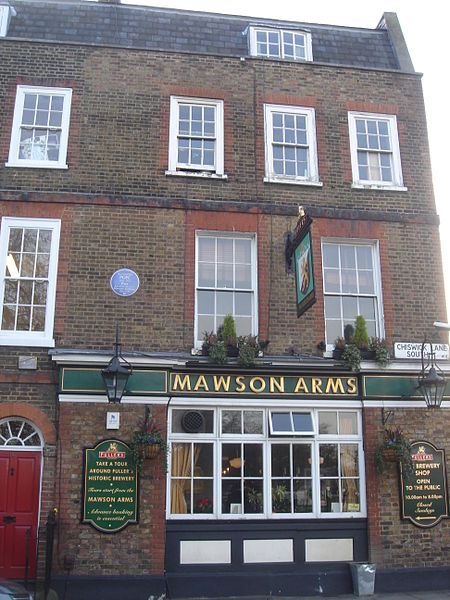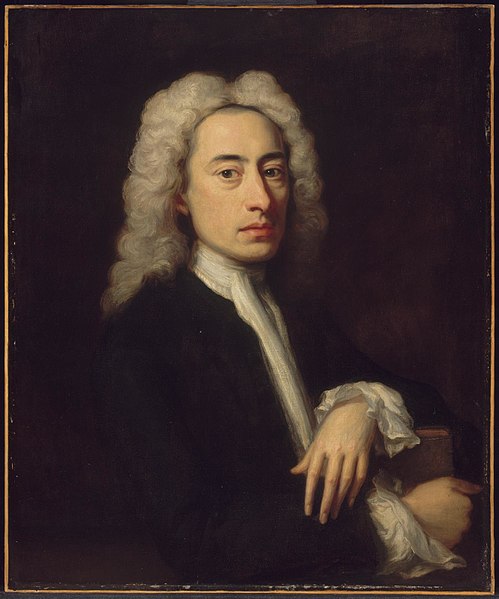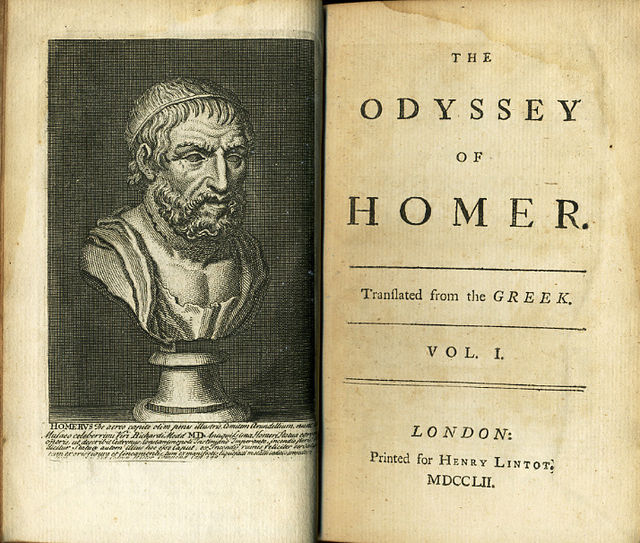Pope's villa was the residence of Alexander Pope at Twickenham, then a village west of London in Middlesex. He moved there in 1719 and created gardens and an underground grotto. When Baroness Howe of Langar (1762–1835) purchased the house, she demolished it in 1808 and built a new house next to the site. The house and grotto were topics of 18th- and 19th-century poetry and art. In about 1845, a neo-Tudor house known as Pope's Villa was built on approximately the same site; it has been used as a school since the early 20th century. Pope's Grotto, which is listed Grade II* by Historic England, survives and is occasionally open to the public.
Pope's Villa, Twickenham by Samuel Scott (c. 1759)
Pope's villa at Twickenham by J. M. W. Turner (1808)
Pope's Villa in 2009
Alexander Pope was an English poet, translator, and satirist of the Enlightenment era who is considered one of the most prominent English poets of the early 18th century. An exponent of Augustan literature, Pope is best known for his satirical and discursive poetry including The Rape of the Lock, The Dunciad, and An Essay on Criticism, and for his translations of Homer.
Portrait by Michael Dahl, c. 1727
Mawson Arms, Chiswick Lane, with blue plaque to Pope
Alexander Pope, painting attributed to English painter Jonathan Richardson, c. 1736, Museum of Fine Arts, Boston
Frontispiece and title page of a 1752 edition of Pope's Odyssey







